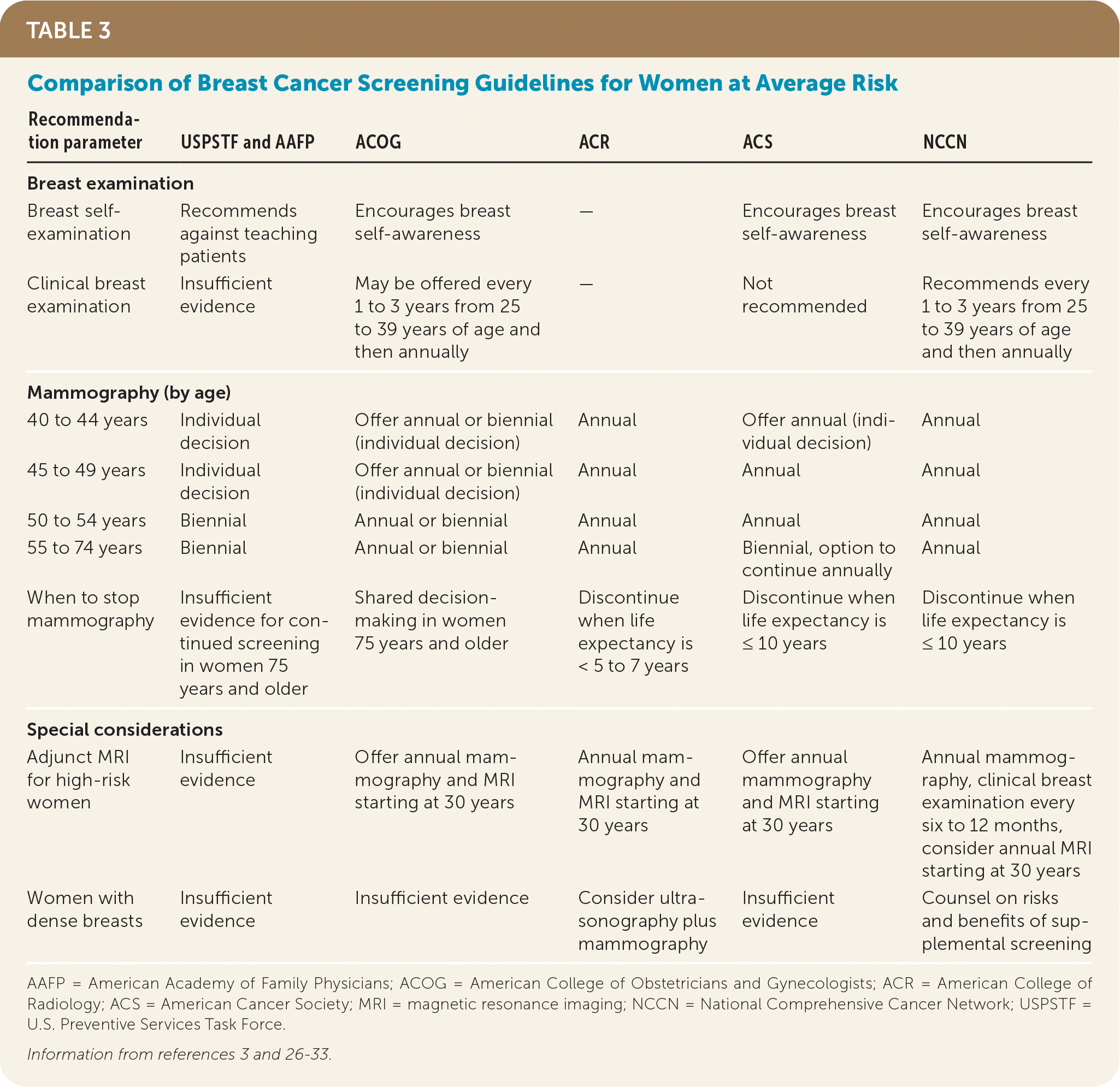| Breast examination | | | | | |
| Breast self-examination | Recommends against teaching patients | Encourages breast self-awareness | — | Encourages breast self-awareness | Encourages breast self-awareness |
| Clinical breast examination | Insufficient evidence | May be offered every 1 to 3 years from 25 to 39 years of age and then annually | — | Not recommended | Recommends every 1 to 3 years from 25 to 39 years of age and then annually |
| Mammography (by age) | | | | | |
| 40 to 44 years | Individual decision | Offer annual or biennial (individual decision) | Annual | Offer annual (individual decision) | Annual |
| 45 to 49 years | Individual decision | Offer annual or biennial (individual decision) | Annual | Annual | Annual |
| 50 to 54 years | Biennial | Annual or biennial | Annual | Annual | Annual |
| 55 to 74 years | Biennial | Annual or biennial | Annual | Biennial, option to continue annually | Annual |
| When to stop mammography | Insufficient evidence for continued screening in women 75 years and older | Shared decision-making in women 75 years and older | Discontinue when life expectancy is < 5 to 7 years | Discontinue when life expectancy is ≤ 10 years | Discontinue when life expectancy is ≤ 10 years |
| Special considerations |
| Adjunct MRI for high-risk women | Insufficient evidence | Offer annual mammography and MRI starting at 30 years | Annual mammography and MRI starting at 30 years | Offer annual mammography and MRI starting at 30 years | Annual mammography, clinical breast examination every six to 12 months, consider annual MRI starting at 30 years |
| Women with dense breasts | Insufficient evidence | Insufficient evidence | Consider ultrasonography plus mammography | Insufficient evidence | Counsel on risks and benefits of supplemental screening |
